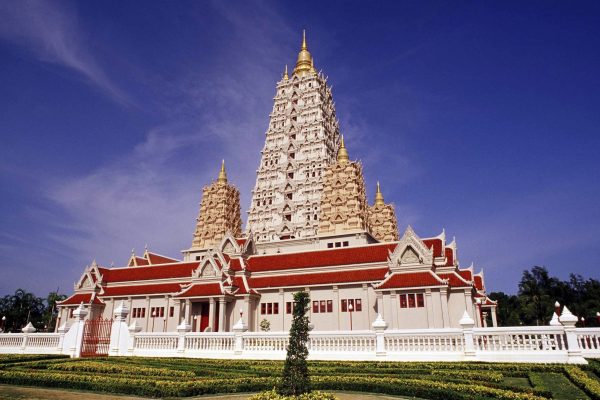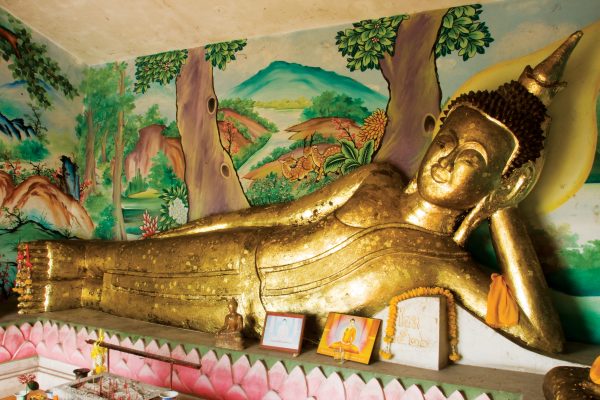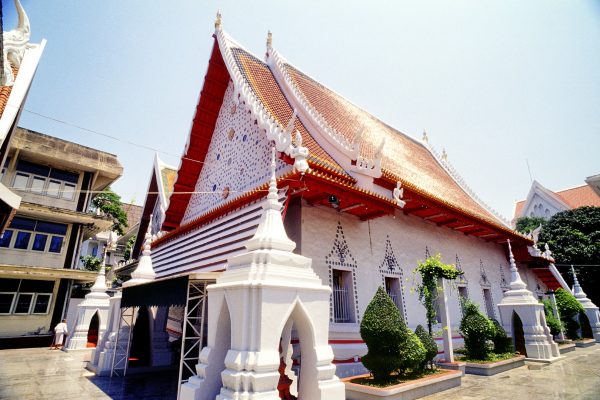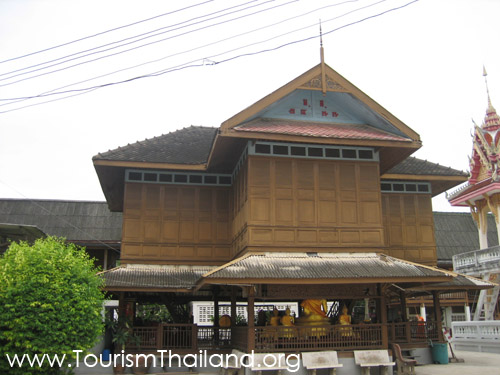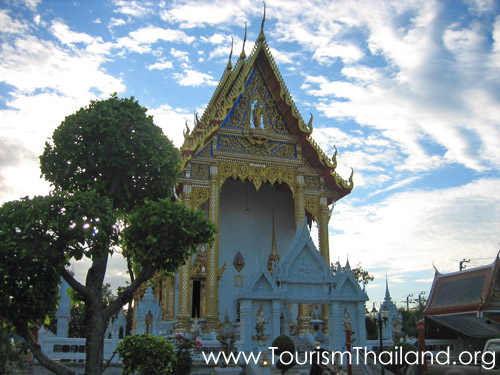
Wat Bang Pai
Wat Bang Pai is a royal temple. This was originally a civil temple. Locals call the temple “Wat Bang Pai” and the temple was promoted to a royal temple by the King. It is classified as the third rank and in the type General on 23 June 2006. The overall atmosphere is pleasant and cozy. The temple consists of buildings, permanent objects, sacred golden Sukhothai-style Buddha statues and Uthong Buddha statues. Formerly, the area is full of bamboos; therefore, the temple was named after the general appearance of areas until it has gained the royal granting of the land in 1772.The notable spot that can be seen from a long distance is the temple wall which imitates the military fort. The three forts belonging to the temple are Ho Pra Tripitaka (A place for keeping the scriptures with four gable ends) in the middle of water with four arches and a pyramidal roof used not only for keeping the Buddha’s teaching but also for keeping the imitated Emerald Buddha statue and holy Buddha statues. The former church installs Mongkol Sri Sukhothai Buddha statue or “Luang Por Thong” which is the principal statue subduing the Mara with legs crossed over hundreds of years. The statue is made of gold and the specific year of building the statue is yet to be identified, presumably established in the late period of Ayuddhaya Kingdom, judging from the architecture. The place for keeping the scriptures is a four-gable-end building, established in 1992. It is mostly walled with mirror and installs Tripitakas. The sermon hall in a monastery is made in Thai style and with four arches and a castle top. H.R.H. the Crown Prince together with Her Royal Highness Princess Bajra Kitiyabha presided over the inauguration of the school. Moreover, Teepangkara Rasmichoti Pavilion is made of ferro-concrete in Thai style and is a 3-storey building situated in the South of the school used for a place for meditation for buddhists and the public.Wat Bang Pai is not only a royal temple but also an ancient temple. According to Department of Religious Affairs, the temple was established in 1766 (During the late period of Ayuddhaya and the early Rattana Kosin)

